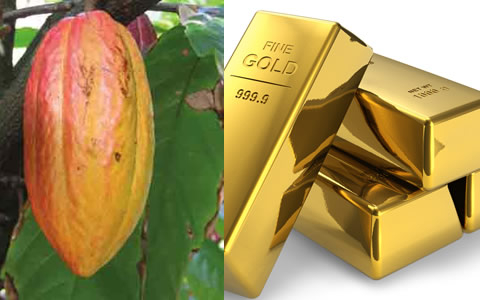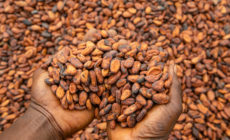They are also expected to grow by 26.6 percent and 1.0 per cent respectively in 2018.
According to a report by BMI, the research outfit of ratings agency, Fitch, gold is expected to increase modestly due to the revitalization of Wassa Gold Mine, operated by Golden Star Resources. In addition, the oil exports are expected to increase further because of the TEN oilfield which came online in August last year.
“Gold is Ghana’s single biggest export, making up of 38.5 percent of total exports in 2016, meaning that any increase in output will have a significant impact on exports”, the report noted.
It added “rising cocoa production will also support exports in 2017 due to excellent growing weather in the 2016/2017 harvest although we expect that harvests will be less productive in subsequent years.”
Whilst cocoa constitutes 30.5 percent of the nation’s exports commodities, oil and gas constitute 15.2 percent of exports commodities.
According to the Bank of Ghana, the nation bagged a total of US$2.4 billion from commodity exports in the first two months of 2017. This included US$1.1 billion made up of gold and US$619 million from cocoa exports.
In 2016, the nation bagged a total of US$11 billion from the main exports commodities including crude oil. Cocoa witnessed a decline of $2.7 billion in 2015 to US$2.4 billion in December 2016. Similarly, earnings from crude oil dropped from $1.9 billion to $1.4 billion at the end of December 2016.
The Ghana Shippers’ Authority have said that Ghana’s maritime trade outlook for 2017 was likely to increase in trade volumes by 10 percent with boost in both import of major commodities and export of raw materials and semi-processed good to the Chinese and European markets.
According to trading economics, imports in Ghana averaged US$2.6 billion from 2003 until 2016, reaching an all-time high of US$4.747.16 billion in the second quarter of 2012 and a record low of US$692.74 million in the first quarter of 2003.
Gold and cocoa to grow this year
- Posted on
- Comment
 GHANA’S two most important export commodities, gold and cocoa are expected to grow by 1.5 and 15.2 percent respectively this year.
GHANA’S two most important export commodities, gold and cocoa are expected to grow by 1.5 and 15.2 percent respectively this year.










 (Selorm) |
(Selorm) |  (Nana Kwesi)
(Nana Kwesi)